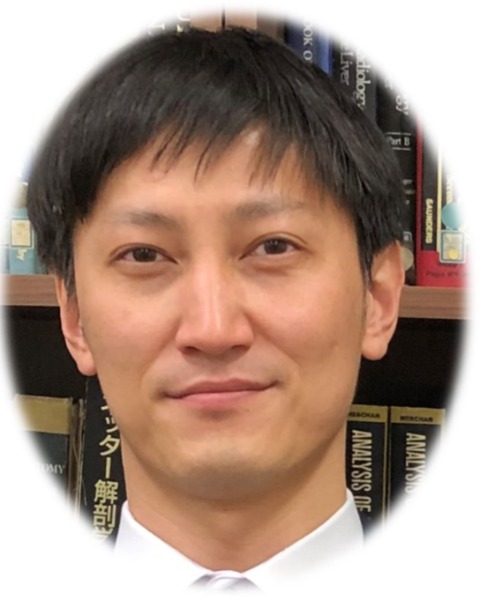PSM
24: Intraperitoneal chemotherapy combined with Cell-free and concentrated Ascites Reinfusion Therapy (CART) for patients with massive malignant ascites due to peritoneal metastasis of gastric cancer.

Rihito Kanamaru, MD PhD
Assistant professor
Department of Surgery Jichi Medical University
Shimotsuke, Tochigi, Japan
Rihito Kanamaru, MD PhD
Assistant professor
Department of Surgery Jichi Medical University
Shimotsuke, Tochigi, Japan
Rihito Kanamaru, MD PhD
Assistant professor
Department of Surgery Jichi Medical University
Shimotsuke, Tochigi, Japan- HM
Hideyo Miyato, M.D. Ph.D.
Associate Proffessor
Department of Surgery, Jichi Medical University, United States - MM
Misaki Matsumiya, M.D.
Graduate student
Department of Surgery, Jichi Medical University, United States - YK
Yuki Kaneko, M.D.
Graduate Student
Department of Surgery, Jichi Medical University, Tochigi, Japan .jpg)
Kazuya Takahashi, M.D. Ph.D.
Assistant professor
Department of Surgery, Jichi Medical University, United States- KK
Kentaro Kurashina, M.D. Ph.D.
Associate professor
Department of Surgery, Jichi Medical University, United States - SM
Shiro Matsumoto, M.D.
Doctor
Department of Surgery, Jichi Medical University, United States - SS
Shin Saito, M.D. Ph.D.
Assistant professor
Department of Surgery, Jichi Medical University, United States - YH
Yoshinori Hosoya, M.D. Ph.D.
Professor
Department of Surgery, Jichi Medical University, United States - HO
Hideyuki Ohzawa, M.D. Ph.D.
Associate Professor
Department of Clinical Oncology, Jichi Medical University, United States - HY
Hironori Yamaguchi, M.D. Ph.D.
Professor
Department of Clinical Oncology, Jichi Medical University, United States - NS
Naohiro Sata, M.D. Ph.D.
Professor
Department of Surgery, Jichi Medical University, United States .jpg)
Joji Kitayama, M.D. Ph.D.
Professor
Department of Surgery, Center for Clinical Research, Jichi Medical University, United States
Abstract Presenter(s)
Submitter(s)
Author(s)
Methods:
We have experienced 12 patients who complaints abdominal bloating or dyspnea due to the massive ascites caused by PM from gastric cancer from 2016-2023. At the beginning of the treatment, paracentesis was performed using a percutaneous IP catheter to remove the ascites. In some patients, the ascites was filtered and concentrated with the CART system (Asahi Kasei, JAPAN), and reinfused through a peripheral vein. Subsequently, paclitaxel (PTX) was delivered through the catheter. As the ascites volume decreased, PTX was administered at a dose of 40 mg/m2 through an IP access port implanted in the subcutaneous space in conjunction with the triweekly systemic SOX regimen (100 mg/m2 Oxaliplatin and 80 mg/m2/day oral S-1).
Results:
In 12 patients, average volume of ascites obtained from 12 patients was 3.6 (2.5-5.4) L. In 7/12 patients, CART procedures were performed. In those patients, average of 3.1 (2.5-4.3) L of ascites was concentrated to an average of 560 mL (2.5-1150 mL) containing 19.3g/dl (8.0-27.0g/dL) total protein, which were reinfused to the patients. Following CART procedure, there was a marked reduction in ascites volume, accompanied by significant increases in urine output, serum total protein, albumin levels, and a notable improvement in performance status (PS) for all patients. The only adverse events reported were a slight increase in body temperature (0.3°C) and minor changes in blood pressure (6 mm Hg) during the CART procedure. An IP port was established in all patients, and IP-PTX was administered for 1-27 courses, with a median of 9 courses. The median survival time (MST) for the 7 patients who underwent IP chemotherapy in conjunction with the CART procedure was 12.4 months, with a 50% one-year survival rate.
Conclusions: The combination of IP chemotherapy with PTX and CART has demonstrated high effectiveness and can be recommended as an initial treatment option for patients with symptomatic massive malignant ascites originating from PM of gastric cancer.
Learning Objectives:
- recognize the effectiveness of combination of IP chemotherapy with PTX and CART for the treatment option for patients with symptomatic massive malignant ascites originating from PM of gastric cancer.
- debate the effectiveness of combination of IP chemotherapy with PTX and CART for the treatment option for patients with symptomatic massive malignant ascites originating from PM of gastric cancer.
- discover the effectiveness of combination of IP chemotherapy with PTX and CART for the treatment option for patients with symptomatic massive malignant ascites originating from PM of gastric cancer.
